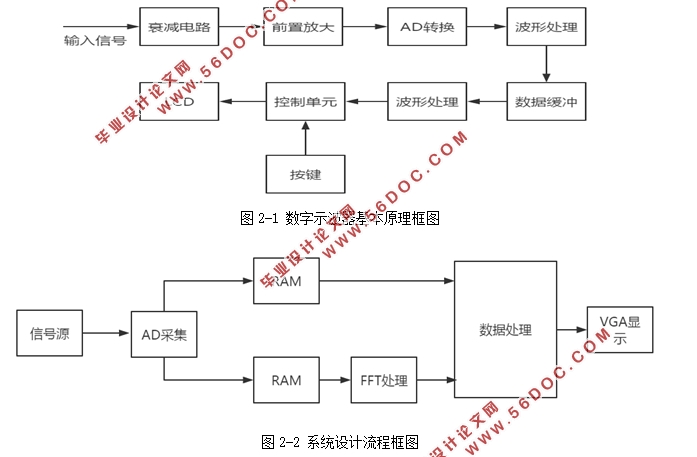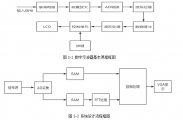基于FPGA的简易数字示波器设计
来源:56doc.com 资料编号:5D21094 资料等级:★★★★★ %E8%B5%84%E6%96%99%E7%BC%96%E5%8F%B7%EF%BC%9A5D21094
资料以网页介绍的为准,下载后不会有水印.资料仅供学习参考之用. 密 保 惠 帮助
资料介绍
基于FPGA的简易数字示波器设计(论文10000字)
摘要:在电子技术飞速发展的21世纪,集测量、显示、存储等多功能为一体的示波器已经被广泛应用于各种电子行业测量领域,其中数字存储示波器更是智能测试仪器的代表。本文介绍了一款基于FPGA的简易数字存储示波器的设计过程,以Altera公司低端经济Cyclone IV系列的FPGA为主控核心,采用TLC549 8位串行模数转换芯片,进行数据采集及模数转换,最后采用VGA显示器进行波形及测量显示。本文还介绍了通过锁相环IP核配置不同时钟的方法以及FFT算法。经过与标准示波器的测试验证,本文基于FPGA设计的简易数字存储示波器拥有操作简单、体积小、重量轻、高精度的优点。
关键词:数字存储示波器、FPGA、VGA、FFT
Simple digital oscilloscope design based on FPGA
Abstract:In the 21st century, with the rapid development of electronic technology, the
oscilloscope, which is a combination of measurement, display, storage and other functions, has been widely used in various fields of electronic industry measurement, among which the digital storage oscilloscope is the representative of intelligent test instrument. This paper introduces the design process of a simple digital storage oscilloscope based on FPGA. The FPGA of the low-end economic Cyclone IV series of Altera company is taken as the main control core, and the TLC549 8-bit serial analog to digital conversion chip is used for data collection and analog to digital conversion. Finally, the VGA display is used for waveform and measurement display. This paper also introduces how to configure different clocks by PLL IP core and FFT algorithm. After the test and verification with the standard oscilloscope, the simple digital storage oscilloscope designed based on FPGA has the advantages of simple operation, small size, light weight and high precision.
Key words:Digital storage oscilloscope、FPGA、VGA、FFT

目录
1 绪 论 1
1.1研究背景及意义 1
1.2示波器国内外研究状况 1
2 系统原理 3
2.1数字存储示波器基本原理 3
2.2数字存储示波器的总体方案设计 3
2.3实时采样原理 4
3 数字存储示波器的设计 5
3.1 编程环境 5
3.1.1 ALTERA系列的FPGA 5
3.1.2 ALTERA开发软件Quartus II 5
3.2 PLL时钟IP核配置 6
3.3 AD控制模块 8
3.3.1 AD基本概述 8
3.3.2 AD通信协议 9
3.4 FFT算法实现 11
3.5 VGA控制模块 15
3.5.1 VGA基本概述 15
3.5.2 VGA通信协议 16
4 测试验证 18
4.1测试方案 18
4.2 测试环境 18
4.3 测试结果 18
4.3.1直流信号电压测试 18
4.3.2系统仿真时序图 19
4.3.3波形对比测试 19
4.3.4系统误差测试 20
5 总结 21
参考文献: 21
致谢 23
|



